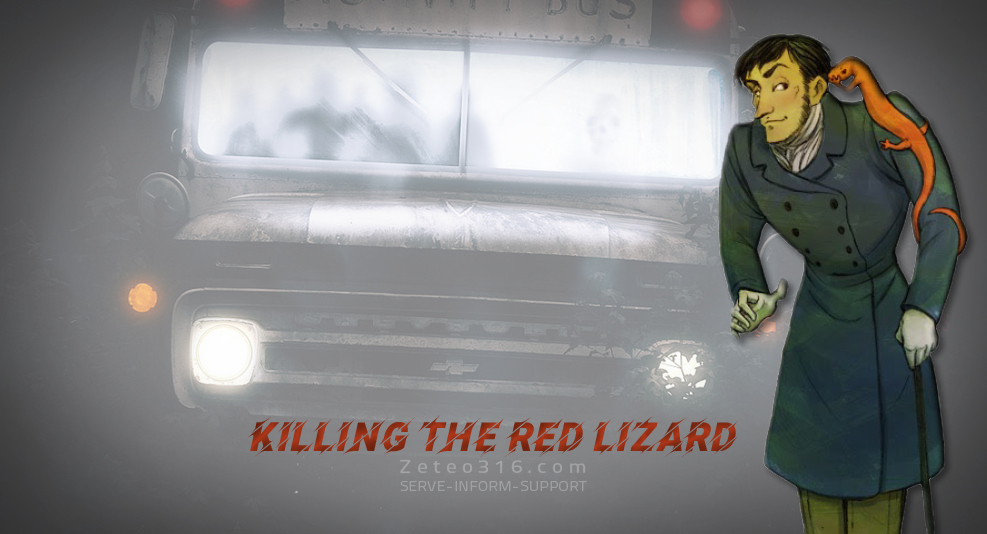
Killing the Red Lizard is a title derived from a scene in C. S. Lewis’ little book, The Great Divorce. A little red lizard sits on a ghost’s shoulder whispering lustful thoughts into his ear.
Lewis says he got his idea of the title The Great Divorce in deference to Blake’s Marriage of Heaven and Hell. Lewis used this allegory to emphasize the Great Divide between the two.
Throughout the book Lewis speaks in the first person. We begin by finding him walking long deserted (mean) streets of a grey dismal city. It is perpetually just before sunset and always raining. It never, ever changes.
He eventually stumbles across a queue of quarrelsome people waiting at a bus stop, so he joins it. After several skirmishes in which some individuals leave the queue, a glorious flying bus arrives to pick them up. We soon discover that they are all people who have died – in fact they’re insubstantial distorted ghosts, even the main protagonist.
The place they’ve left is hell and the destination is a border land of heaven. If hell is grey and dismal, this great border land is its opposite. The ethereal ghosts are soon met with fiery angels and glorious human citizens of heaven who have traveled incredible distances for the purpose of evangelism.
Of course, the whole premise isn’t good theology, and likely not meant to be. It is, after all, an allegory. But the often heartbreaking conversations between the ghosts and the glorious being are very insightful. Lewis seems to have understood human sin nature very well.
Some of the interactions between the heavenly people and the ghosts are left frustratingly unresolved. Most end up with the ghost wanting to return to hell. The single success is the ghost with a whispering red lizard on his shoulder.
It emerges during this conversation that the ghost is torn between disliking the lizard’s lustful suggestions, and yet enjoying them. A fiery angel confronts him with the offer to silence the red lizard. The ghost agrees at first, but then is afraid of the “burning” nearness of the angel. He also doesn’t want the lizard to be killed.
The angel informs him there isn’t any other way. Even if the process involves some initial pain, it won’t kill the ghost. Once the ghost relents and the lizard is killed, he becomes a solid glorious being like the citizens of heaven. Furthermore, the dead lizard transforms into the greatest stallion ever seen. The ghost mounts the horse and they ride off towards the great mountains of heaven together.
In his book, Devoted to God, Sinclair Ferguson discusses this incident. He suggests that we substitute ourselves for the ghost, indwelling sin for the lizard and the Holy Spirit for the angel. The stallion must then represent the freedom we experience from the effects of indwelling sin.
While man is enslaved to sin, the Christian may often feel defeated by it. We recommend reading Jack Kinsella’s The Defeated Christian for a balanced view of this issue.
Maranatha!
